Heinrich Cornelius Agrippa is arguably the most influential writer in all of Western esotericism. De occulta philosophia libri III or Three Books of Occult Philosophy is his largest and most well-known work. Written, revised, and expanded over the course of two decades, it was finally published in full in Cologne in 1533. The first full English translation was completed by the mysterious J.F. and was published about a century later in London in 1651. For over 350 years, this was the only English translation available.
Then, suddenly, over the last two years, two new English translations have been published. In 2020, a translation by Paul Summers Young was published by Black Letter Press. Close on its heels, Eric Purdue’s translation was published by Inner Traditions in 2021. The modern occult world is now awash in fresh new translations of Agrippa’s seminal work.
Both of these lovely new editions cost around $200. This price tag means that most people won’t be very eager to purchase both, and since you are reading this, I assume you are trying to figure out which is the edition for you. Well, thanks to all of the lovely Arnemancy supporters out there, I was able to procure both of these new translations. This is my double Agrippa review.

This review will also refer to Donald Tyson’s annotated edition of J.F.’s translation, first published by Llewellyn Publications in 1993. In addition to reviewing both new translations, over the course of 2022, I will be exploring some of the central themes of Agrippa on the Arnemancy podcast.
Review Criteria
My Latin is atrocious, so I will also be looking at the sense of confidence that the translation gives the reader. Renaissance Latin is apparently its own kind of monster, so I collected some fun quotes from various Latin-loving friends to give us an idea of what we are dealing with.
Andrew B. Watt had this to say:
For someone with a reading familiarity with classical Latin, reading Renaissance Latin is a bit like reading someone who finished Latin III in high school but hasn’t studied the language for forty years and makes up words to fill gaps in his knowledge rather than looking things up in a dictionary; and also forgot that he has his old Wheelock’s Latin Grammar in a box in the attic, 4 and just invents endings where he isn’t sure. He also has a nasty habit of writing in shorthand from time to time, and expects you to get it because those were standard abbreviations when he was taught Latin in high school.
Also, he’s drunk, and has been since before breakfast.
“Renaissance Latin uses more obnoxious words and constructions that make Virgil seem boring and straightforward, and Cicero someone you’d go out to a pub with,” said Sam Block.
“It’s easier than medieval Latin but more annoying,” added Ɔ. Martiana.
Knowing all of these things about Renaissance Latin—the Latin of Agrippa—it becomes all the more important that the reader feels confident in the proficiency of the translator.
Throughout the this review, I will be referring to the different English editions of Agrippa as J.F., Tyson, Young, and Purdue.
Paul Summers Young (Black Letter Press, 2020)
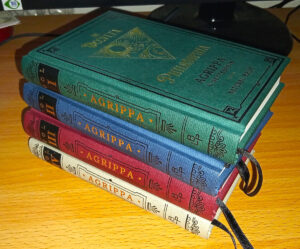 Paul Summers Young is no slouch when it comes to translating occult books. Many of his translations have previously been printed by Black Letter press, including Le Petit Albert, The Red Dragon, and The Black Pullet. He is certainly a well-known translator. After watching an interview with Mr. Young regarding his translation, I realized that he had a pretty good handle on the topic, so I felt confident about this purchase.
Paul Summers Young is no slouch when it comes to translating occult books. Many of his translations have previously been printed by Black Letter press, including Le Petit Albert, The Red Dragon, and The Black Pullet. He is certainly a well-known translator. After watching an interview with Mr. Young regarding his translation, I realized that he had a pretty good handle on the topic, so I felt confident about this purchase.
This edition feels delightful. It is a perfect size for reading, and the binding is nice and easy. You can hold it open with one hand, it is small enough to read anywhere, and the cover is sturdy enough that you can feel okay about carrying it in a bag—with special care. Given the ease of reading this edition, I devoured it when it arrived. Yes, this is the Agrippa that I read cover-to-cover.
However, there are a few problems with this translation that really need to be addressed. First, there are no footnotes. This baffling omission means that no matter what, the Young translation cannot be your only translation if you intend to use this as a working manual of the occult. In comparing the two translations, I randomly opened to Book I Chapter XX, where Eric Purdue translates the Latin hyæna as “hyena” while Young translates it as “civet cat”. This is fishy—it’s the same translation used in J.F., but one would think that a modern translator would at least make note of it. There is no footnote in Young, but there is in Purdue. This makes me lose confidence in the translation, and means that you will need to consult the Latin yourself if you ever have any questions. To work with this edition, you will need to also own either Tyson or Purdue. Unfortunately, Black Letter Press did not produce an edition that can be used without supplemental materials.
The second disappointment with this edition is that it omits all of the epistles in the front matter. The original Latin has beautiful letters between Agrippa and Johannes Trithemius, as well as dedicatory letters from Agrippa to his patrons. I was saddened to see that a translation of those letters was not included.
Finally, these books suffer from a poor editing job and a lack of proofreading, particularly as you get into the third book. While still readable, there are errors in Hebrew and some strange mistakes in text block layout in the third book. It is particularly saddening to see that these errors persisted into the second edition. It is almost as if Black Letter Press didn’t expect anybody to read that far.
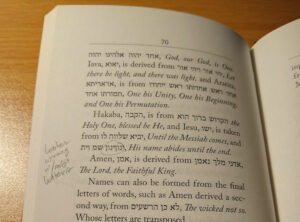
This Hebrew error should have been easy to catch for any Hebrew proofreader. Note that it uses a final letter in the middle of a word.
These three problems were really a head scratcher for me. This translation is such a monumental effort, and the price tag on the books is so high, that it is baffling that these issues would be overlooked. However, the books do have excellent indices and they have an excellent form factor for reading anywhere.
Young’s Book IV bears special mention, as it includes material that was never part of De occulta philosophia. This volume’s real gem is a fresh translation of excerpts from De incertitudine et vanitate scientiarum atque artium declamatio invectiva, or The Vanity of Arts and Sciences. Fortunately, it is possible to buy Young’s Book IV individually.
Eric Purdue (Inner Traditions, 2021)
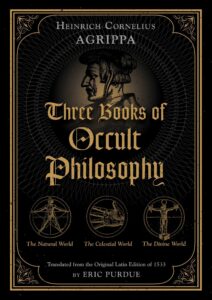 Before I pen this review, I must include a disclaimer. I know Eric Purdue. We met in 2019 at the Texts & Traditions Symposium in Seattle, and since then we have kept in touch via the Internet.
Before I pen this review, I must include a disclaimer. I know Eric Purdue. We met in 2019 at the Texts & Traditions Symposium in Seattle, and since then we have kept in touch via the Internet. Purdue’s translation is printed as a three-volume octavo (8vo) with a nice slipcase. Each volume is cloth bound with a dust jacket. These are sturdy, well-made books, but in contrast to the Black Letter Press edition, they are much less a piece of bookbinding art than a pragmatic way to publish such an important work. The binding is high quality and the books open nicely and stay open. They feel good to handle. While the size of the books makes them more difficult to read casually, it also gives the numerous charts, tables, and illustrations a lot more room to unfold and be legible.

The Eric Purdue translation looks pretty good without its dust jacket.
As Foolish Fish noted in his video review, this edition’s dust jackets are pretty easily marked. But that’s to be expected: they are black paper! While I understand that many people buy these expensive occult books as collector’s items, I primarily buy them because I use them. I expect my books to get a lot of use. I also write notes and marginalia in my books,2 which brings me to something that I absolutely love about the text block of Purdue’s translation: huge, wide, glorious margins! Throughout the book, there are already helpful topic glosses3 in the margins, but there is also plenty of space for taking notes.

Book III Chapter XXX is an excellent example of this edition’s layout.
It is obvious that Eric Purdue cared a great deal about his translation work. This edition is filled with footnotes that detail translation notes, Agrippa’s sources, clarification of difficult passages, and comparisons with J.F. This helps the reader have much more confidence in the quality of the translation. This is particularly important in Book II, The Celestial World, where Agrippa discusses rules for electional astrology. Purdue’s expertise and experience in this topic shines through in his footnotes, where he clarifies some muddy instructions from Agrippa, explains the reasoning behind his translations, and helps elucidate a very difficult topic. For the astrological magician, this edition is worth it for Book II alone.
Purdue’s efforts in tracking down Agrippa’s original sources is also commendable. Many have remarked in the past that Agrippa took much of his material from Pliny the Elder, the Picatrix, and other sources. However, until you see the effort that Purdue took in tracking down those sources, it is difficult to understand how much of De occulta philosophia was lifted from other authors. It is not only enlightening, but provides a great amount of additional reading material. Purdue includes an expansive bibliography and comprehensive index in Book III.
Finally, another mark in Purdue’s favor is the inclusion of new translation of the introductory epistles in all three volumes.

The planetary tables and sigils in Book II are nicely laid out and very legible.
Conclusion
You can purchase Eric Purdue’s translation here.
However, if you are interested in a lovely display edition that will sit on the shelf, Young is perfectly sufficient. The physical qualities of Young make it a delight to handle and read, and the books are lovely. If you intend to take a casual approach to your relationship with Agrippa’s work, and having beautiful books for your collection is more important, go with Young.
You can purchase Paul Summers Young’s translation here.
Did you enjoy this article? My Patreon supporters received it early! Become a Patreon supporter today and get early access to blog posts and podcast episodes.


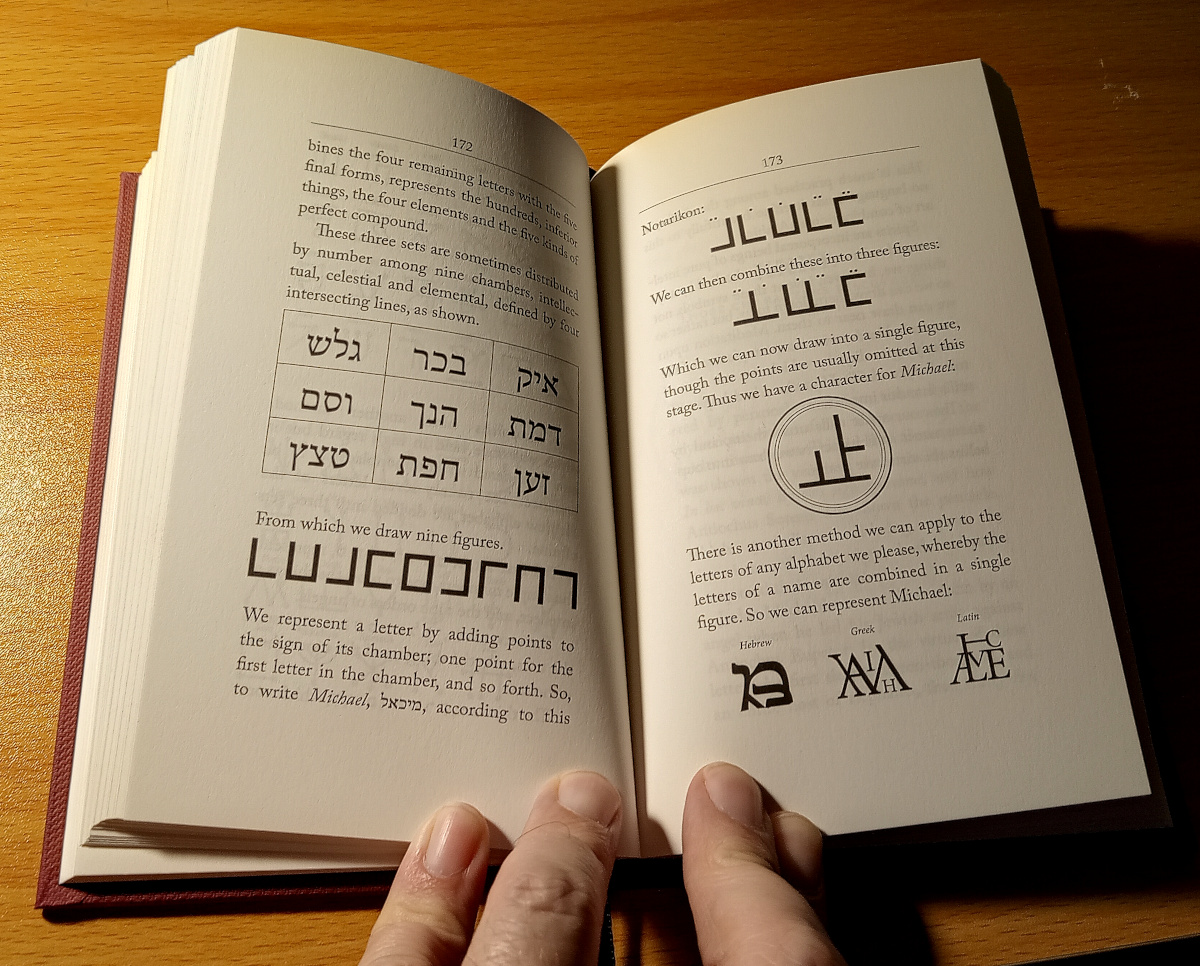
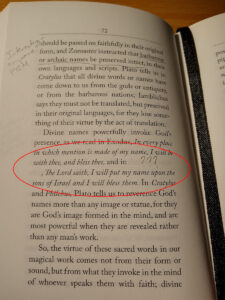
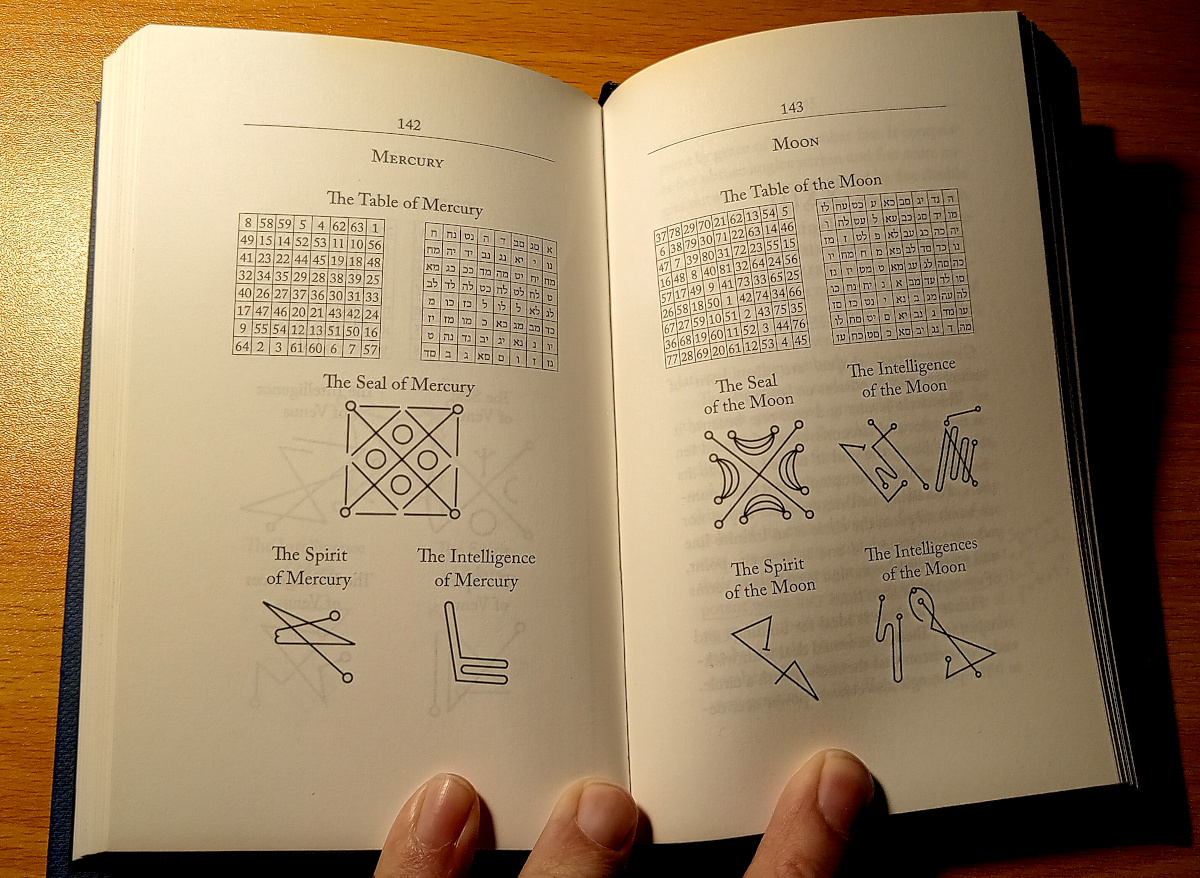

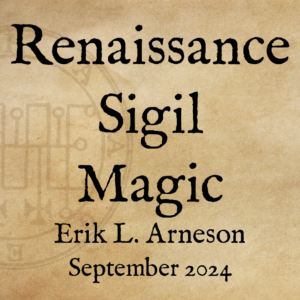

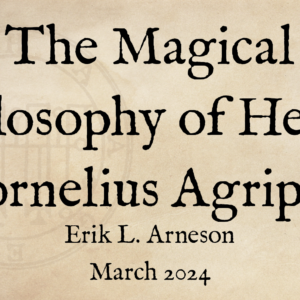
I recalled some of the astrological translation issues, so when I was comparing these two a couple weeks ago I saw that in the foreword Christopher Warnock calls out issues in the JF translation of bk 2 ch 30, so I compared them. Just the first sentence of that chapter is vastly different between the Young and Perdue translations. Young drops decans & combustion, as well as merging wording for succedent houses with houses of joy, which vastly changes the astrological implications around planets. Even if that was the only mistake, I’d be upset.
Oh, good catch! I hadn’t noticed that. That is a pretty significant change.
Erik—I believe the apt typographic term you’re looking for is “sidenote.” Thanks for the helpful review!
Ah! That’s probably true. It’s not a very exciting name though.
It follows the appellative scheme for “footnote,” “headnote,” “endnote,” etc., but YOU can call it whatever you like to jazz things up. Have a great weekend! 🙂
[…] My review of the modern translations of Occult Philosophy […]
[…] to Eric Purdue’s long work on his translation of this book, we have a pretty good answer: plagiarism! Agrippa used material from over 200 sources to compile […]
[…] My review of the modern translations of Occult Philosophy […]
[…] My review of the modern translations of Occult Philosophy […]
[…] My review of the modern translations of Occult Philosophy […]
[…] My review of the modern translations of Occult Philosophy […]
Hi, I was stumbling over this review only now! I wasn’t aware of these translation and editing issues, since nobody has ever addressed them to us. Your remarks are of high value and will help to make the next edition better. Thank you very much!
[…] by Heinrich Cornelius Agrippa. This would make sense, because he is, after all, the author of The Three Books of Occult Philosophy. The Fourth Book (FBOP) was released after Agrippa’s death, however, and one of his closest […]